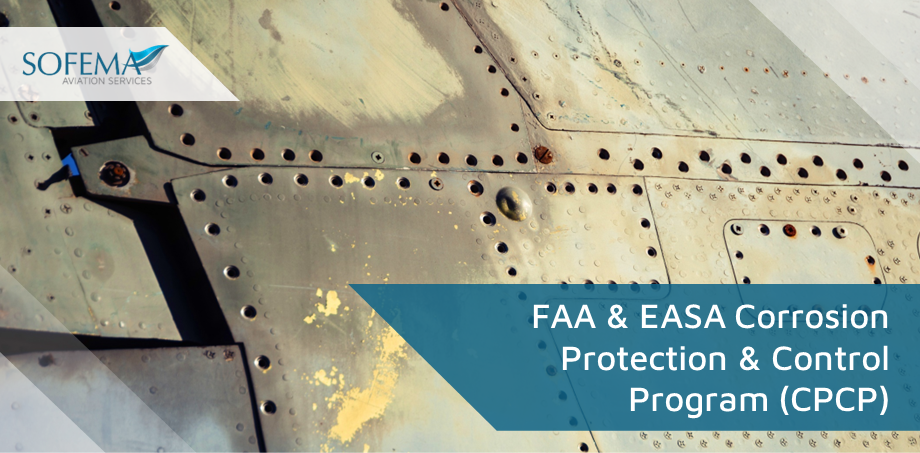Sofema Aviation Services (SAS) looks at the regulatory objectives driven by an FAA & EASA-compliant Corrosion Protection and Control Program.
Introduction – Why do we need a CPCP?
All large aircraft are vulnerable to different forms of corrosion and most, (but not all) are subject to a CPCP.
Note – For Aircraft which are MSG3 Compliant the CPCP program is included within the Maintenance Review Board Process. For Aircraft which are MSG2 Compliant (Certified between 1970 & 1980) The CPCP program is typically stand-alone.
A CPCP provides a systematic approach to both prevent and control corrosion in the aircraft’s structure.
- The objective of a CPCP is to limit the deterioration due to corrosion to a level necessary to maintain airworthiness (typically Level 1 corrosion or better) and where necessary to restore the corrosion protection schemes for the structure.
- An effective CPCP not only limits the direct effects of corrosion, but helps prevent fatigue failures initiated by corrosion and the detrimental effects of fatigue and corrosion in combination.
CPCP Historical Case
In April 1988, Aloha Airlines Flight 243 experienced an inflight decompression attributed to fuselage structural failure.
- The National Transportation Safety Board (NTSB) determined the cause of this accident was the disbonding and subsequent fatigue damage of a structural lap joint.
- During the investigation, the NTSB found that maintenance personnel accepted the classic signs of developing corrosion damage as normal wear & tear related to operating conditions.
- A program to control and prevent corrosion of the entire aircraft was not evident.
- The corrective action of corrosion findings was often deferred with no record of the basis for deferral.
Recommendations
The NTSB recommended that the FAA develop a model for a comprehensive CPCP that would be included in each operator’s approved maintenance program.
- FAA Order 8300-12 was developed (Since cancelled) to provide guidance for operators to develop a CPCP.
- The Corrosion Protection and Control Program is a systematic approach for controlling corrosion in the airplane’s primary structure.
- The objective of a CPCP is to limit the material loss due to corrosion to a level necessary to maintain airworthiness.
What is involved in the Development of a CPCP Program – Operators Responsibility
The operational environment of the aircraft sets the type and aggressiveness of the program. Aircraft exposed to such environments as salt air, heavy atmospheric industrial pollution, or over-water operations, will need a more stringent CPCP than an aircraft operating in a dry environment.
- Operators must follow a constant cycle of cleaning, inspection, operational preservation, and lubrication to prevent corrosion.
- Prompt detection and removal of corrosion will limit the extent of damage to an aircraft and its components.
- The basic philosophy of a CPCP should consist of:
o Personnel adequately trained in recognizing corrosion, including conditions, detection and identification, cleaning, treating, and preservation;
o Thorough knowledge of corrosion identification techniques;
o Proper emphasis on the concept of all-hands responsibility for corrosion control;
o Scheduled corrosion inspections;
o Aircraft washing at regularly scheduled intervals;
o Routine cleaning or wipe down of all exposed unpainted surfaces;
o Keeping drain holes and passages open and functional;
o Scheduled inspections, removals, and reapplications of preservation compounds;
o Early detection and repair of damaged protective coatings;
o Periodic thorough cleaning, lubrication, and preservation;
o Prompt corrosion treatment after detection;
o Accurate recordkeeping and reporting of material or design deficiencies; and
o Use of appropriate materials, equipment, and technical publications.
Next Steps
Follow this link to our Library to find & Download related support documents.
Note – Sofema Aviation Services offers the following training in support of the understanding regarding development of Corrosion Protection and Control Program:
For additional questions or to register please email team@sassofia.com
Tags:
Corrosion Prevention Corrosion Protection, CPCP, FAA, EASA Corrosion Protection, Corrosion Protection





